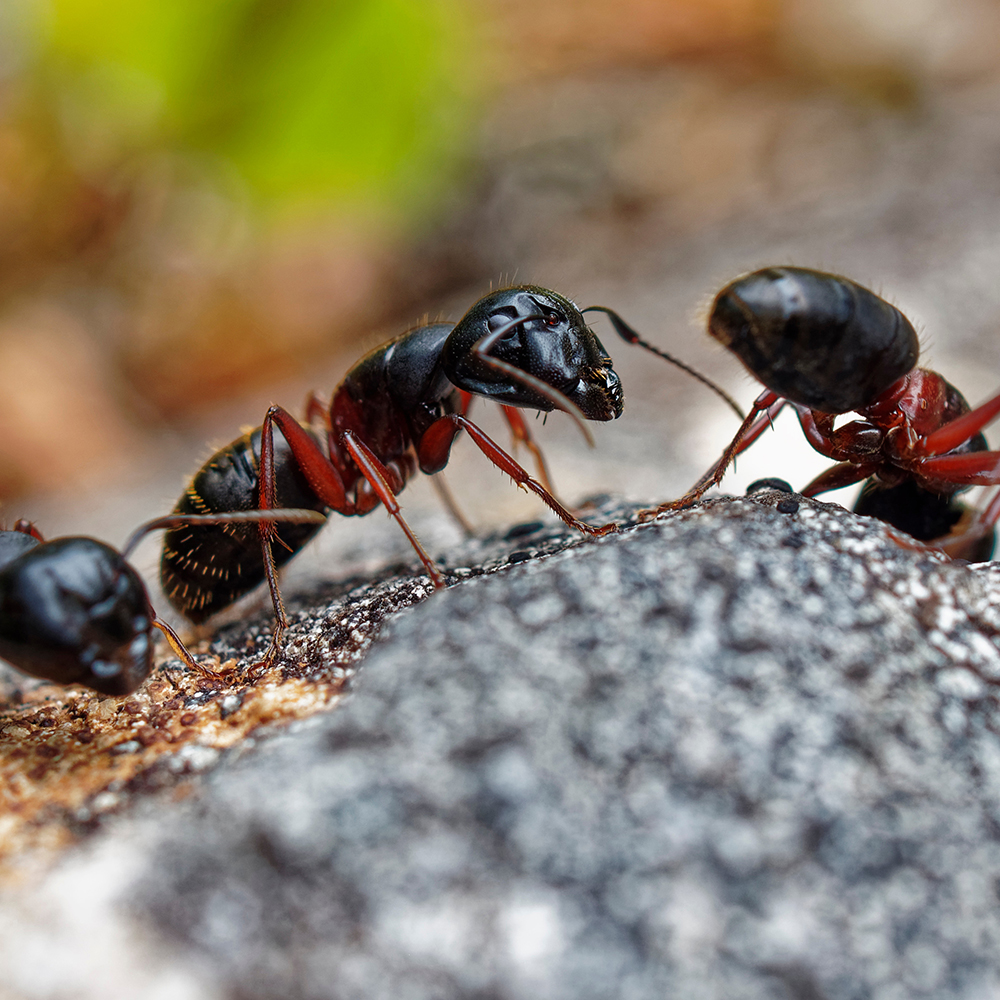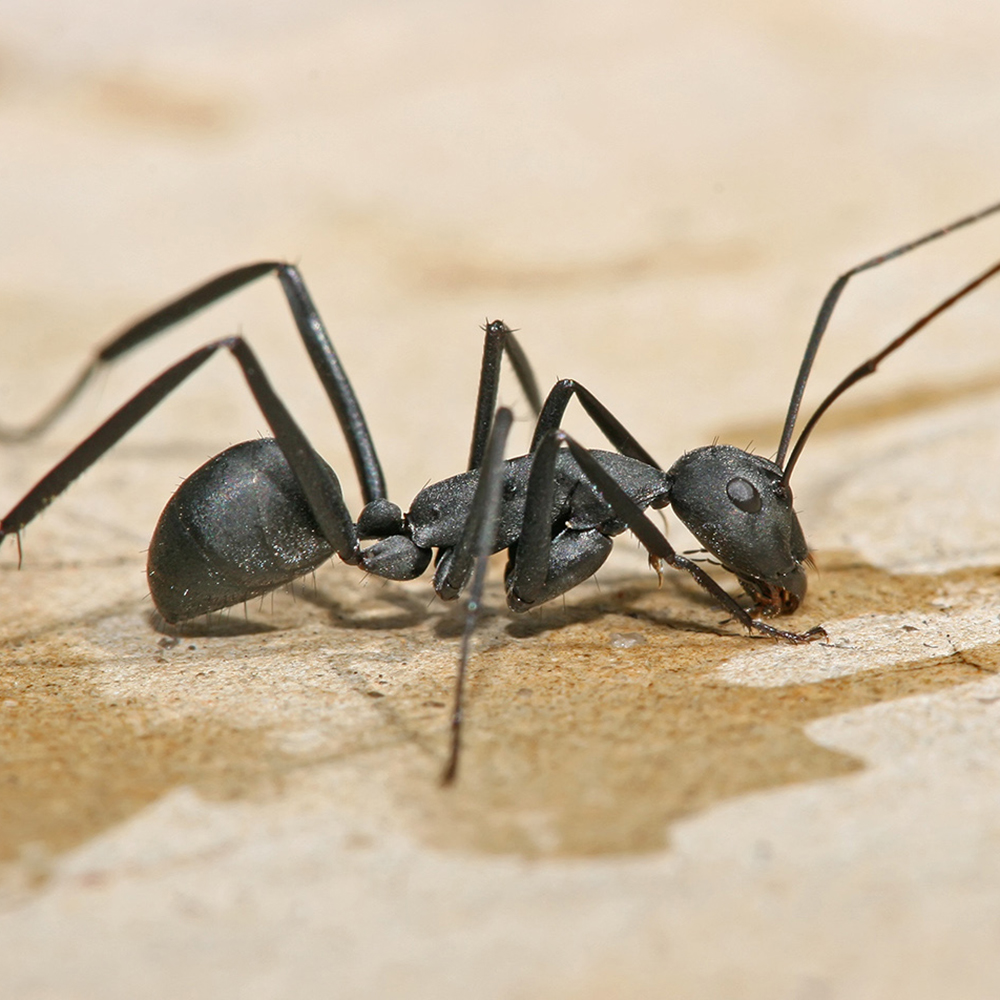Carpenter ants are a common pest in North America, well-known for building their nests inside wooden structures, including homes, rotting trees and tree stumps. Unlike termites, carpenter ants do not consume the wood but instead carve out tubular pathways through which they can travel. As a result, they sometimes leave behind a sawdust-like substance known as frass.

What Are Carpenter Ants?
One of the largest types of ants in North America, the workers can reach sizes of .5 inches in length, and queens can grow to one inch. They are typically dark in color and feed on living and dead insects and sweet substances. Many species feature large mandibles and, when threatened, can force themselves to explode, releasing a glue-like toxin that immobilizes and harms their attacker (this toxin is not dangerous to humans).
A carpenter ant colony begins with a single queen, who secludes herself inside a piece of wood after participating in a mating swarm. The queen then watches over her first batch of eggs, which typically numbers between 15 and 20. The workers produced by the queen watch over subsequent broods and expand the nest by carving out tubular pathways.

How to Get Rid of Carpenter Ants
Locating the colony is necessary for best results, and can be accomplished by following foraging ants returning to the nest with food. Once the location of the nest is discovered, the pest problem can be removed with a dust insecticide treatment sprayed into the wall voids with a hand duster and tubes. After eliminating the colony, be sure to replace any damage wood.
To prevent carpenter ant infestations or re-infestations ensure that there are no plants or tree branches touching your home. Firewood should also be stored away from the house and on an elevated platform not touching the ground. Limit the use of mulch around the home as well, as higher levels of moisture can attract many types of pests.
Carpenter Ant Bites & Treatment
Carpenter ants have large mandibles strong enough to break skin. They also produce formic acid, which they can spray onto the wound to further aggravate it.
Ant Videos
Ready to get rid of your pest problem?
Contact Truly Nolen Canada today to schedule your inspection so we can quickly and safely handle the situation.

